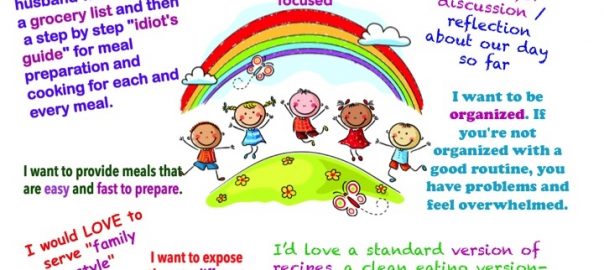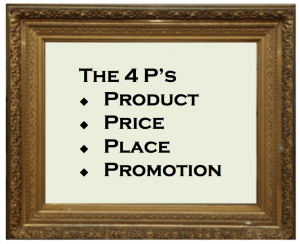Written By: Cath Andrews February 21, 2018

The 3 Parts:
How To Write Product Reviews That Convert — Part 1
So you thought you’d come to this article to read about how to write a stunning sales page. Think again!
The first in this series of three articles is not about writing a sales page. Not yet.
I can hear some people saying “Thank goodness — I hate selling” and others saying “wait — isn’t this a series about writing a sales page?”

You’re talking to the world’s worst salesperson. I feel guilty asking people for money. We used to rent out our house in Italy in the summer — I’m the person who gives guests a bottle of Prosecco if it rains…
So selling is not going to be our main focus. Our focus is going to be firmly on our customers.
And please note: anyone who utters the word “prospect” will have a virtual bucket of ice-cold water dumped on their head immediately.
Why? Because we’re talking about people. Living, breathing people with thoughts and feelings — particularly feelings. It’s the feelings we need to concentrate on most.
At Solo Build It!, we place a lot of emphasis on building up trust. We call it PREselling. So we’re not going to ruin that hard-won trust by doing a “hard sell” to our audience. Nor are we going to sell them a product we don’t believe in.
Because the kind of “sales copy” we’re going to write is not about trying to sell. It’s about talking. It’s about spending a little time with people, and finding out how we can help them.
It’s about trying to make their lives a little better, a little easier, a little happier. It’s about getting to a point where we’re comfortable that what we’re selling will have a positive impact on people’s lives.
Now that, I can live with. But can my customer?
You may have heard of the term “fake reviews.” They’re reviews written with the sole purpose of selling a product, no matter whether the quality of the product is good or not., no matter whether the author has actually used it or not.
They’re reviews written with the sole purpose of making money.
That is absolutely not what we’re about. We are writing an authentic product review with the aim of helping our customers find a solution to a problem, or fulfill a need. Of course, we will offer the sale at the end of our review — we’re not writing for the good of our health!
But we are writing for the good of our potential customer’s health, as you’ll see when you work your way through the action steps.
So as you go through these articles, remember this: your aim is exactly the same as your aim when writing any other page: to provide the best quality information out there.
Your product review page is not about selling to a customer. It’s about talking to a friend.
Is This All Going to Get Too Complicated?
The process and techniques we’ll use here can apply to any product review. They apply to digital and hard products, to affiliate products and your own, from the very expensive to the very cheap.
It’s right to say that for some, it will seem like overload. After all, if you’re selling a glitzy Easter ornament from Amazon for $9.99, you may not want to go into as much depth as you would writing a page about your e-course that you’re selling for $500.
But the principles are exactly the same.
So don’t despair when I say we’re not going to start writing our pages right away. We need to do some work before we get to that.
Part 1: Where’s the Pain?
The overall point of a product review / sales page is to show that we understand where our customers are at now, and demonstrate how our product can help them get to where they want to be. When we start to write, that’s what we’ll be focusing on.

Think of it like this: your customer is on one side of a door. To her, the door looks closed and barred. She has no idea how to get through it.
Your job in writing your product review is to start where your customer is, unlock the door and lead her through.
So before we even choose the product we’re going to review and sell, we need to focus on what our customers want or need.
Not what we want, and not what we think they want.
One of the most important things to understand about purchasing is that it tends to be emotionally based. Even buying something as practical as a new vacuum has its emotional trigger: “I can’t stand being surrounded by dust any more.”
The psychology of buying suggests that people buy a product not so much for its features as for what benefits it has for them — how it will directly improve their life. Purchases are generally made for one of three reasons:
- To solve a problem.
- To fill a need.
- To fulfill a desire.
Potential customers are more likely to buy if the issue is a pressing problem to which they need a solution. It’s simply more acute, generally, than a need or a desire. The impetus to buy is stronger.
So what we’re selling is much, much more than a “product” or a service. It’s
- a solution
- an outcome
- an experience
- a life-enhancer.
Which is where today’s task comes in.
Step 1: Your First Task Is to Define the Problem
1. If you already have a product in mind for your review, use whatever time you can put aside today to think about…
- What is the single most pressing problem for your potential customer?
- If this isn’t about a problem, what’s her (or his –– I use “her” for brevity) single most pressing need or most heartfelt desire?
- How does this specific product help solve that problem, or fulfill that need or desire?
- What will be the one main benefit of your product for the customer? How will it make her feel after she’s bought it? How will her life be improved?
2. If you don’t have a specific product in mind at the moment, even better. Ask yourself the same questions, in a slightly different way…
- What is your customer’s single most pressing problem, need or desire?
- What product can you offer — whether it’s your own or an affiliate’s — that will best solve that problem, or fulfill that need or desire?
- What will be the one main benefit of your product for the customer? How will it make her feel after she’s bought it? How will her life be improved?
Step 2: Find Out What Your Customer Needs
No idea what your customer’s most pressing problem, need or desire is? Or think you may know, but you’re not really sure? Time to find out!
How?
- Ask! Use your newsletter, questionnaires, social media platforms, forums — any way you can think of to talk to your specific customer group.
- A very useful question to ask is: “What do you know now that you wish you’d known before you started [in my case] keeping chickens?” Try it — you may be surprised at the patterns that emerge. It gives a great insight into what troubles people most.
- Take a look at the social media (particularly Facebook) posts of your competitors. What seem to be the most common issues for followers? Which questions are most often asked?
- Use your own experience. What was your major problem when you started out? What would have helped you solve it?
Top Tip: Think Creatively
Try to think outside the box. Here’s an example.
I have a site about keeping backyard chickens. One of my most popular (and lucrative) products at first sight seems totally unrelated to chickens.
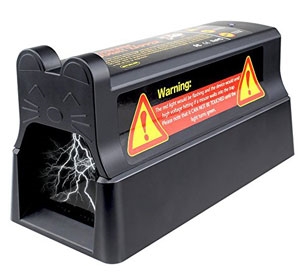
It’s an electronic rat trap. I sell upwards of 20 of them a day, and they cost around $35 each.
Why so popular?
Because I discovered that one of the most critical problems for chicken keepers is rats. Where there’s grain, there are rodents. I discovered that when I had an infestation. Suffice it to say it was not pleasant.
When I looked for solutions, what I found was many, many complaints about rats in the chicken run, but no long-lasting solutions.
So I asked for advice from some real live rat-catchers (who had fascinating stories to tell), and then I wrote a series of articles about it: how to know if you have a problem, how to tell mice from rats, how to go about ridding yourself of the problem…
That led to the product review which is, in effect, a sales page. There’s even a downloadable checklist about rats which, naturally, gets people on my mailing list.
So, think creatively, particularly if you don’t have a specific product in mind. Find the most pressing problem. Find a solution. Write about it. Done.
Take some time now to work out how you’ll identify the most pressing problem, need or desire for your audience. Keep notes. We’re going to come back to this — it’s one of the two most critical parts of this series.
Part 2: Express Your Customer’s Pain
Let’s start with this thought:

From Steps 1 and 2, we have some information about what’s in your potential customer’s heart — where she’s at, what her problem or need is. Now we need to look at how she’s feeling about it.
Why is that necessary? Because…
“Feelings + thought = purchase.”
Reach out to the pain point. Next, let your customer know you understand her pain, or need. Then, and only then, describe the product.
“Feelings + thought = purchase.”
Step 3: Learn to Identify Your Customer’s Pain
We’re going to continue with the “feeling” part of the equation by looking at how best to speak to your customer in language to which her heart will respond.
To do that, we need to examine the kind of language she uses when she’s recounting her problems.
Why? Because using some of that same language makes our product review / sales page more likely to resonate. “This person understands exactly how I feel” is the reaction we’re looking for.
Case Study
I’m going to use an example here to illustrate exactly what I mean.
Meet Megan. Megan is a daycare provider. She has some fabulous books to sell — her own products — but she isn’t getting many sales.

Her books are about what to feed children in daycare. She used to have a sales page that simply described what the books were about — healthful, easy-to-make recipes, together with a shopping list for each one.
It’s a great idea — the books should have been jumping off the shelves! But her words weren’t resonating with her audience.
Let’s take a look at a couple of daycare provider forums and hunt out threads related specifically to food. We don’t need to ask them anything nor enter into conversation. We’ll just lurk for a while.
Now we can see the kind of things people are saying about feeding children in daycare. These quotes are genuine, taken from a real, live forum. Note particularly the “feeling” words the providers use.
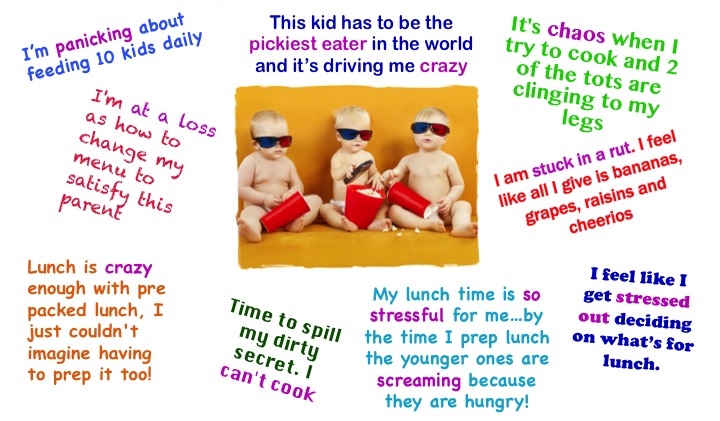
Look at those emotive words and phrases: “panicking”; “driving me crazy”; “at a loss”; “chaos”; “stressed out”…
From the outside, some of it may seem funny (“I feel like all I give is bananas, grapes, raisins and cheerios”!) but to those daycare providers, we’re talking serious stress.
What’s the solution they’re looking for? Could Megan’s books be part of it?
Most of them really don’t know what they need. They’re just expressing their feelings. It’s the way they’re describing the problem that gives us a clue as to where they are now and the emotional state they want to be in — where they want to get to.
Reflecting these words back to the customer in our product review will immediately resonate with her…
“Are you at a loss to know what to feed your daycare kids?
Does lunchtime feel like chaos, every day?
Feeling stressed out even trying to decide what to have for lunch?”
And the feeling that will engender in our potential customer? “Thank goodness — someone who understands exactly how I feel!”
Now let’s look at the flip side. Other providers in the same forum have a clearer view of how they’d ideally like to feel and what the ideal solution would look like…
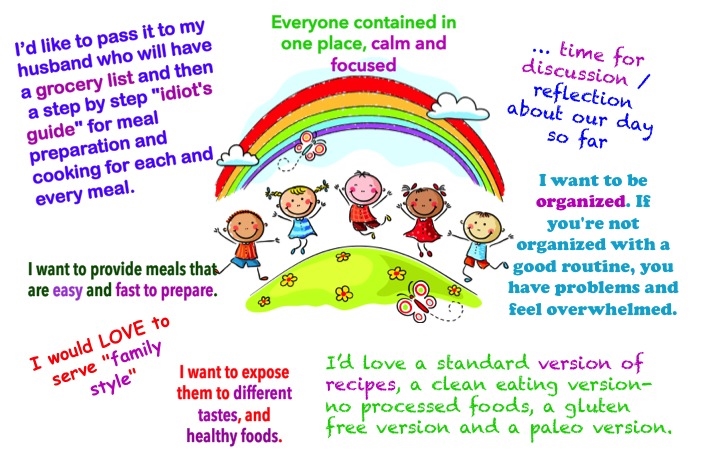
Again, look at the language:
“Calm and focused”; “time for discussion / reflection”; “organized.” And in among it, there’s the very idea for a product that Megan has already created!
How do we use this?
Put it together with the earlier “problem-focused” language:
“Are you at a loss to know what to feed your daycare kids?
Does lunchtime feel like chaos, every day?
Feeling stressed out even trying to decide what to have for lunch?
“If you wish you could feel organized, calm and focused at mealtimes, if your heart’s desire is to be able to sit down, family style, and eat healthful foods with different tastes while having time for discussion about the afternoon ahead…
“I have exactly the answer you’ve been looking for!”
See how it works?
It doesn’t always work out as clearly as this. Sometimes you have to dig more deeply. But the greater the problem, the more likely you are to discover an intensity of language that you can use to good effect.
And maybe you’ll stumble upon ideas for future products in the process.
Does It Feel Manipulative?

If so, you may need to reset the way you think about products. What you’re actually doing is matching up problems your audience has with a solution they really, badly want — and are saying they want.
Is that manipulation? No. It’s serving our customers. We’re not going to sell them a product they don’t want. We’re going to talk about any drawbacks of the product as well as its benefits. We’re not going to deceive them about how the product will change their lives in the sense of making them rich / beautiful / successful overnight.
But we are going to tell them how our product, whatever it may be, can help change their world for the better — a little at a time.
Step 4: Learn to Speak Your Audience’s Language
Your second task, and the final one for this part of the series, is to learn to speak the same language as your audience. The aim is to foster rapport and credibility.
You may already have your own “voice” for your blog or website. What we’re looking at here is not changing that voice. It’s about using some of the language your potential customers are using. It’s about identifying their pain points, and empathizing with them.
So go learn your new language!
- Have some fun with this. Use forums, blogs, social media posts — wherever you can think of that potential customers hang out — to examine how people in your niche describe their problems, needs and desires.
- What exact words do you see being used repeatedly both to describe the problem (or need / desire) and to describe how they’d feel if it were solved for them? What kinds of solutions are they asking for?
- Don’t try to second-guess this. Don’t think that your customers “must” use the same language you do. The likelihood is, they won’t.
- There’s a downloadable template/worksheet (sign up below to receive it) for you to use for this exercise. Use it if it helps, to keep a record of what you’ve discovered so far. Refer to your notes when we start writing our review.
Summary
In this first of our three articles about writing a stunning product review, we’ve looked at our potential customer, her problems, needs and feelings, and the language she uses to express those issues and feelings.
The next article in the series will take a look at making sure the product we’re about to sell is one that improves our customer’s life, so that she will not just buy from us, but also shout her recommendation from any available rooftop!
Resources
Want to know more about fake reviews? There is a series of articles on the Solo Build It! Blog, the first of which is:
“What is a Fake Review, and Why Should You Care?”
Cath Andrews

(113)
Report Post